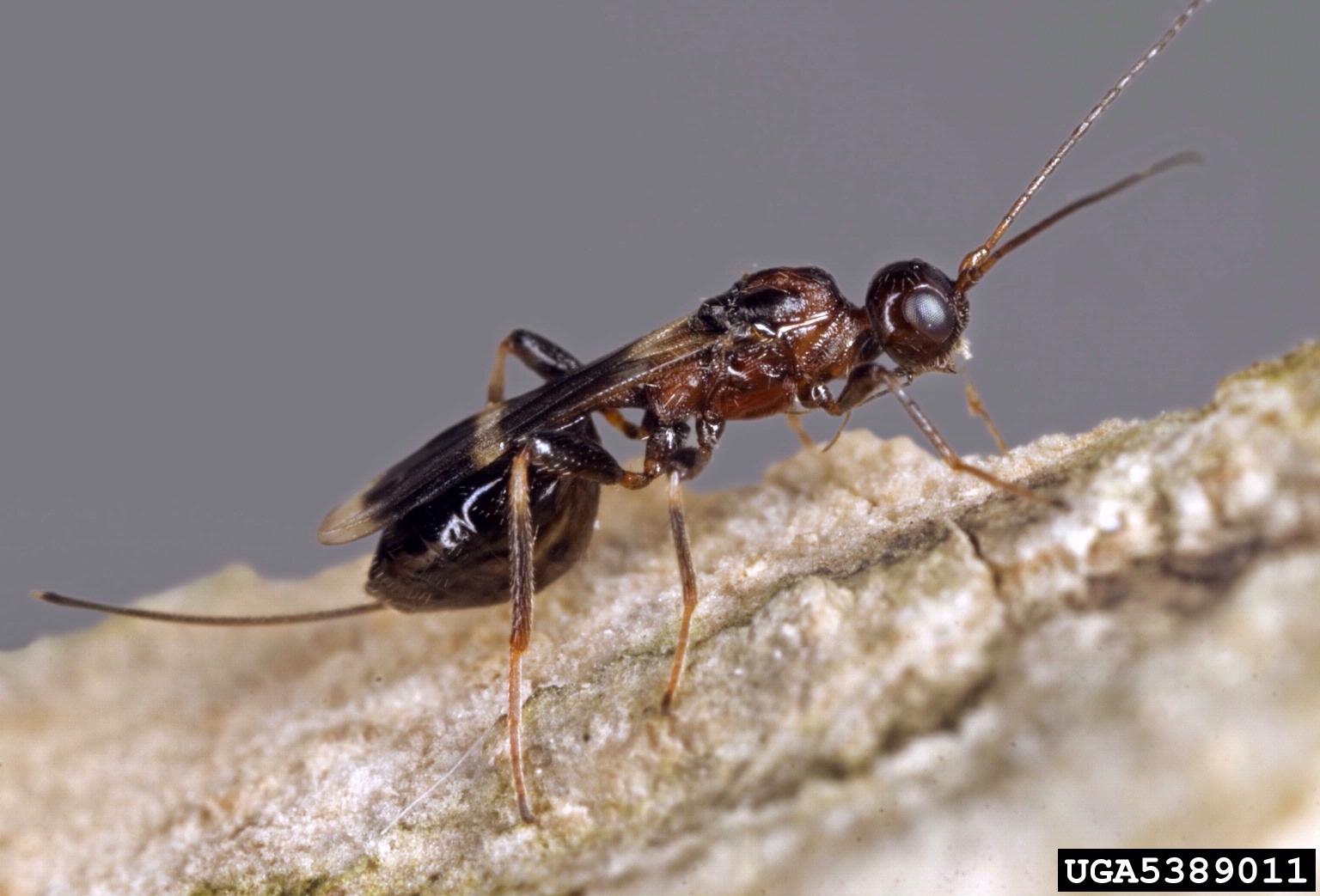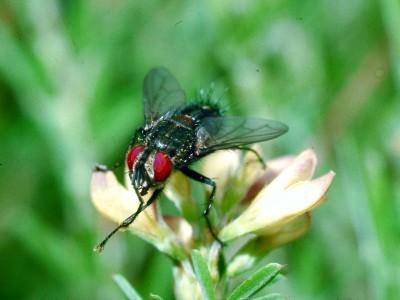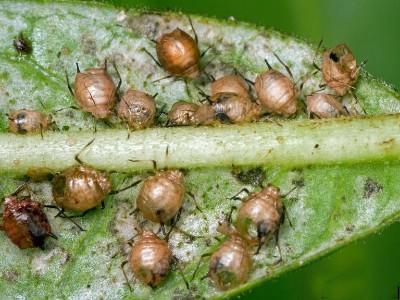Characteristic symptoms of parasitized host insects
- Hosts often change color because they are killed, normal development has been disrupted, or the immature parasitoid developing inside is visible through the host’s skin.
- Parasitized eggs may also become much darker.
- Some hosts may have the eggs, larvae, or pupae (cocoons) of ectoparasitoids visibly attached to the outside of their bodies.
- “Mummies” of parasitized hosts may be found, especially aphids, caterpillars, and some scale insects. Mummified bodies become swollen with a hardened outer skin and hollowed-out interior, and remain attached to leaves. Aphid mummies often turn black or brown, and the mummies of soft scales are blackened.
- Exit holes left by emerging new adult parasitoids are often seen in the bodies of dead hosts. Parasitoid emergence holes are usually round and relatively smooth-edged, unlike the ragged, irregular holes and tears left by predators.
- Unusual host behavior may indicate parasitism: some hosts leave the plant part they normally feed on and move to another location, many simply stop feeding. Hosts continue to cling to plant leaves or stems, but barely move about or feed.
How can I help parasitoids flourish in my garden?
- Include many different types of plants in the garden and landscape to attract parasitoids; low plant diversity leads to fewer parasitoids present.
- Parasitoids are tiny and require shallow flower heads with easy access for their minuscule tongues to reach the nectar; provide for their needs by including flowering Umbelliferae plants (e.g., coriander, dill, parsley, wild carrot) in the garden.
- Use local native flowering plants, trees, and shrubs in the landscape to best meet the needs of local parasitoids.
- Plant an early-blooming cover crop in the fall in the garden to provide nectar and pollen in spring.
- Choose plants with different flowering times to provide nectar and pollen all season.
- Avoid using pesticides, especially when plants are in bloom.
- Learn more about gardening for natural enemies.
Contributors: Mike Raupp, Jon Traunfeld, and Chris Sargent
Still have a question? Contact us at Ask Extension.







